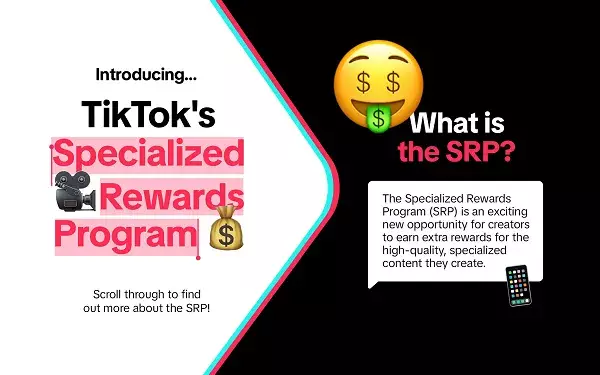As social media platforms continue to evolve, the battle for creators has intensified, especially between titans like TikTok and Meta. In a strategic maneuver to maintain its roster of influencers, TikTok is unveiling an invite-only “Specialized Rewards Program.” This initiative aims to offer a higher payout for what TikTok defines as “stand-out, high-quality content” in specialized genres, including Film and TV, Automotive, Learning, and Sports. By creating this tailored opportunity, TikTok is responding not just to the numbers but also to the growing anxiety among creators about the platform’s long-term viability amid government scrutiny.
While TikTok has largely operated under a premise that the exposure it provides is a reward in itself, the tide seems to be shifting. With the threat of government action hanging over its head, it’s clear that TikTok realizes it must sweeten the pot to keep top creators. These individuals form the backbone of content engagement and viewer retention and with Meta now positioning Instagram as a more favorable platform for creators, TikTok’s concerns about retention are more pronounced than ever.
The Pressing Need for Creator Reassurance
As negotiations continue around TikTok’s status in the U.S., the stakes are sky-high for creators who depend on the platform for their income. The ongoing discourse surrounding potential bans, tariffs, and the geopolitical climate significantly impacts creators’ sentiment towards TikTok. Stress and uncertainty cloud the futures of these content creators, prompting an immediate need for reassurance. The introduction of the Specialized Rewards Program can be seen as TikTok’s calculated response to an existential crisis many creators are feeling: will this platform still exist for them a year from now?
By enhancing monetization options, TikTok seeks to retain an essential part of its ecosystem. The aim here is not simply to pacify concerns but to energize creators. Offering “additional rewards” alongside existing Creator Rewards can help foster a connection that has been strained by recent developments. Yet, many question whether this will suffice; after all, many creators are eyeing competitive platforms like Instagram, which are aggressively courting them with promises of stability.
The Reality of Creator Contentions
Despite any clever new strategies, TikTok’s monetization approach has often been seen as lacking compared to other platforms. Historically, TikTok has emphasized that its prominence should be enough of a motivator for creators. However, creators are beginning to dig in their heels, demanding a more equitable compensation structure for the value they bring. The current shifting conditions present an opportunity for TikTok to reassess its stance. If TikTok can begin changing its narrative around creator compensation, it might not only stabilize its existing creator relationships but also lure new talent from potential competitors.
Moreover, as the competition for creator loyalty heats up, it will be fascinating to see who will be selected to join this new program and how those individuals will leverage this opportunity in a time of uncertainty. While TikTok has been reticent to pay more than the necessary minimum, the impending struggle to retain creators could push it to rethink long-held beliefs about creator compensation. In a marketplace as fluid as social media, adaptability may well define success—or failure.
In an era marked by swift uncertainty, the strategies platforms deploy now will determine which will emerge dominant in the evolving landscape of content creation.

